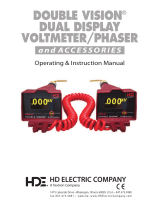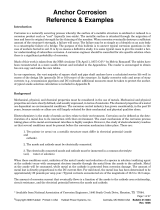
2
Basic Design and Function
ALL MODELS
To confirm that a line is de-energized prior to performing maintenance, the
Multi-Range Voltage Detector (MRVD) presents field practicality over a
voltmeter* and obvious advantages over traditional methods without a meter.
Readings from an MRVD meter can be compared with numerical certainty
rather than the subjective judgements associated with "fuzzsticking" or
"glow-detecting." In place of interpreting an arc's intensity or the degree of
brilliance from a neon light, the MRVD gives the operator a metered value.
Actually a field-intensity meter, the MRVD is calibrated to read approximate
line-to-line voltage when connected to any phase conductor. It responds
to the magnitude of the field gradient between its end probe and floating
electrode (at the universal hotstick-attachment fitting). If the universal fitting
is close to a ground, another phase or another voltage source, the reading
should tend to be high; if it's close to a jumper or equipment of the same
phase, the reading should be low.
Readings will vary with the field intensity, determined by a great variety of
field conditions including the proximity, size and orientation of all system
components in the vicinity, both energized and grounded. Erroneous zero
meter readings, when the line is actually energized, can result from both
MRVD electrodes being at the same electrical potential. To avoid such field
distortions, keep the MRVD as far away as practical from system components
other than the specific conduc tor being tested.
The MRVD should be used as a secondary means only to confirm the
condition of a circuit after such principal work procedures as visual open
gaps, dispatcher hold orders and apparatus tag-outs render the circuit
de-energized.
* Test on a known source before and after taking a reading to verify proper
operation. Even if it were practical in the field to connect a voltmeter directly
from a line to ground, an overbuilt circuit of a higher voltage could induce
enough voftage on the "dead" line to make the voltmeter reading actually exceed
normal line voltage. Since it is not a voltmeter, no specific accuracy is claimed by
the MRVD manufacturer or can be assumed by the user.
The MRVD is protected against voltages greater than its highest full-scale rating.
Test on a known source before and after taking a reading to verify proper operation.
NOTICE















